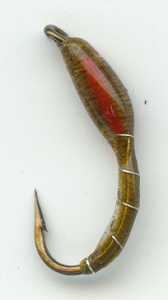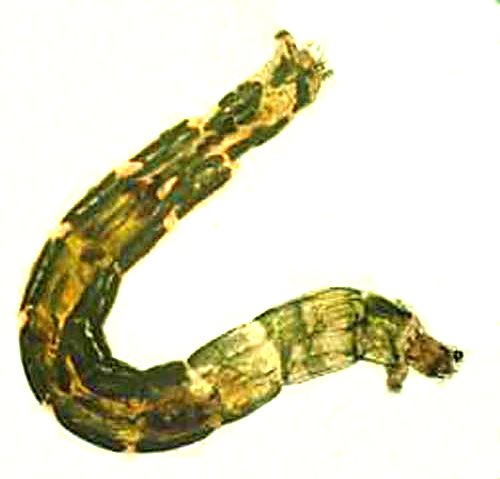Olive Ribbed Epoxy Buzzer Midge Nymph
The olive ribbed epoxy buzzer midge nymph fly imitates the tiny Chironomid flies that inhabit lakes and slow-flowing rivers that are eaten by grayling and trout.

EPOXY BUZZER MIDGE FLY PATTERNS. Hook size 14 12 - $US each
How to fish an Olive Ribbed Epoxy Buzzer
Whilst on holiday in Wales I went with my brother-in-law Richard to a local trout fishery. It was our first time at this location. The water was very clear, just like you would find on a chalk stream or alpine lake. Seeing all the fin-perfect fish cruising around just under the surface, with more than a few breaking the surface to feed on an emerging insect of some description got us both salivating at the sport to come. Our immediate reaction was to start thinking about the type of dry fly we should tie onto our leaders.
I then stopped and took a closer look with my polarised sun glasses to cut down on the glare. On closer inspection I noticed that most of the fish were feeding sub-surface feeding. They seemed to be taking buzzers, rising midge larvae, as they travelled through the water column.
In these circumstances I use a static fly, floating line and a ‘nymph and bung’ combination. If the water you fish states that it is a one fly fishery, lime this one, then there are a number of options for the surface strike indicator, ranging from hard foam, wool or Antron.

Each has a good and bad characteristic. The foam ones are a little difficult to cast, but they do remain very high in the water and are easy to see. Yarn indicators land softly and are easier to cast but do not float very high so can be difficult to see.
The bung method will allow you to change the fishing depth easily to find where the fish are feeding. If you get no action at one depth try again with a different length to search out the feeding fish. When you get a bite keep future casts at that depth. Remember that a change in weather temperature can also change the depth at which the trout feed so be aware of your environment.
Grease up the braided loop. This prevents the front of the line from slipping under the surface. Once this goes under the depth you are fishing your nymph will change and may result in no takes. I find a small Ethafoam indicator is ideal as it lands light and does not spook the fish, but it is dense enough to support a heavier fly.
Fly choice is always a problem. You can only know for sure what the trout are feeding on if you catch one and spoon its stomach contents. That is not always an option and many fishermen like me enjoy catch and release. My advice would to use a generic fly pattern that represents a host of different insects.
Richard decided to try an Olive epoxy buzzer whilst I went for a Oliver ribbed epoxy buzzer. Richard cast his line out and left his line to dead drift and wait for a take. I did the same but, after allowing time for the buzzer to sink, I started a figure of eight retrieve. Now some fisherman will be horrified at this but I made sure the indicator caused a surface disturbance that created a V wake behind it.
My thinking is not as silly as it looks. Adult Caddis flies, who’s wings have dried, make a V shaped wave as they try to take to the skies for the first time. It also ensures the nymph is lifted back into the water column as if it is trying to ascend to the surface.
What I hope to happen is that the trout that is investigating the interesting surface disturbance gets side tracked and takes my rising Olive ribbed epoxy buzzer nymph. It has worked for me time and time again, though not always on my first cast and retrieve.
If I get no takes I just stop the retrieve and allow the fly to sink back down again. The trout can take at any time during this procedure. Do not take your eyes off the surface indicator for a moment. Any second you may need to react to any movement with a swift lift of the rod tip to set the hook.
If you get no action and you are fishing with a friend increase your ability to find the right feeding depth by changing you leader to different lengths. We caught fish steadily all day.
Just as it was getting near home time I see a real big fish approach Richard’s static nymph only to turn away at the last minute. I quickly shout instructions: short retrieve, retrieve, retrieve, stop. The trout turns back and takes his fly. It was a tiger trout. It was in good condition and put up a good fight. The biggest catch of the day which we made sure went back into the lake so it could fight another day.



